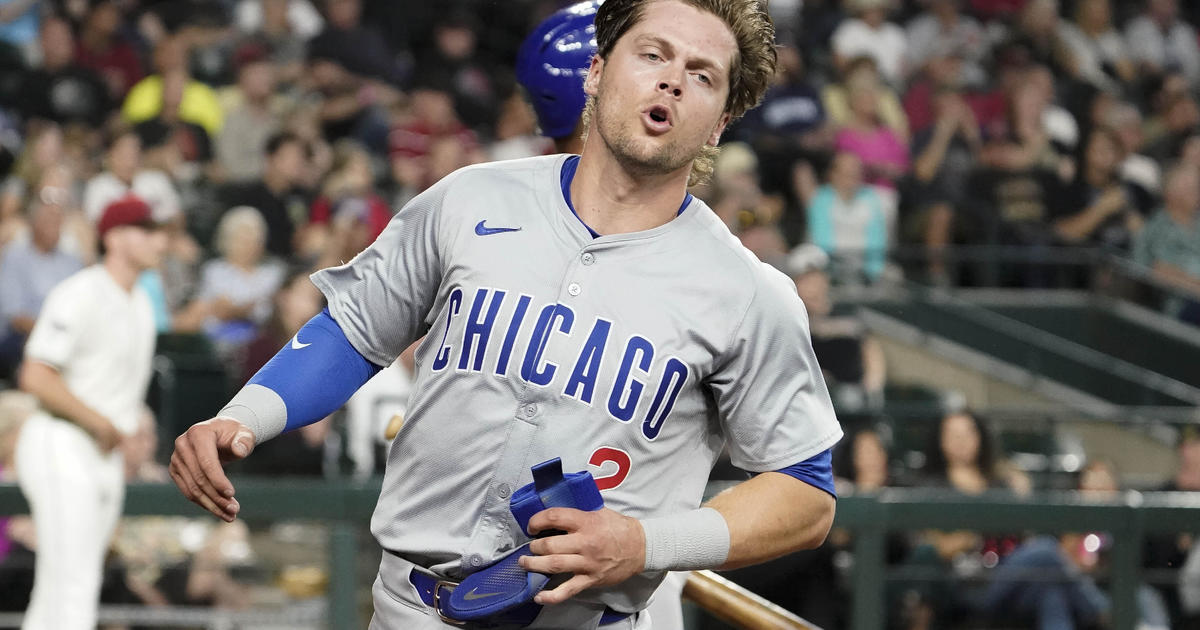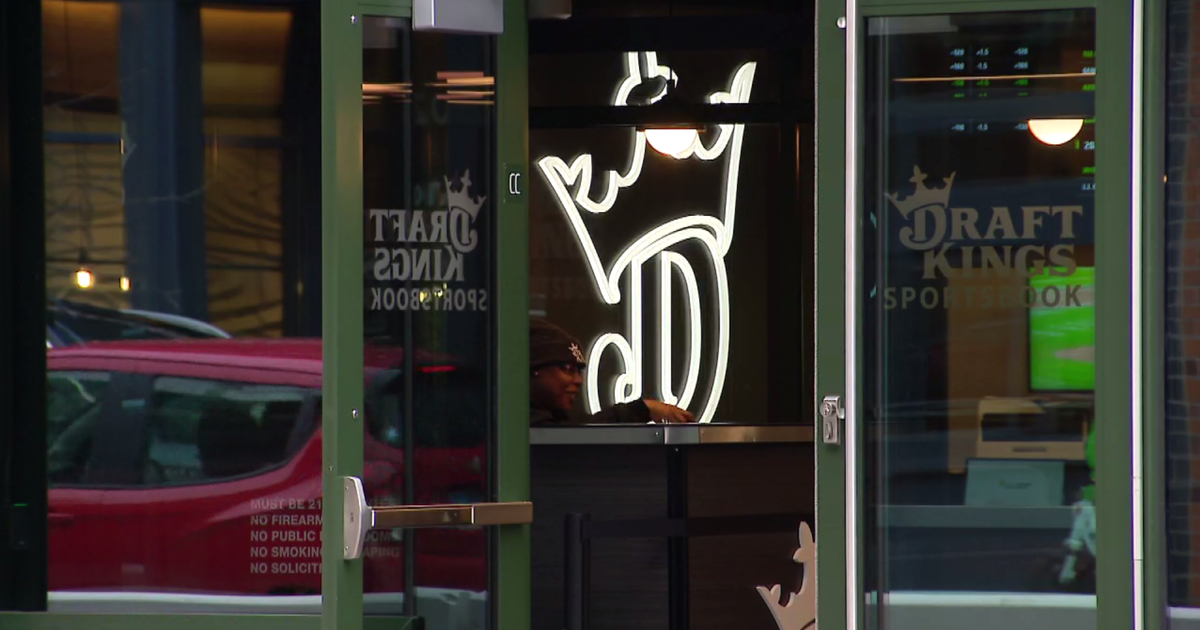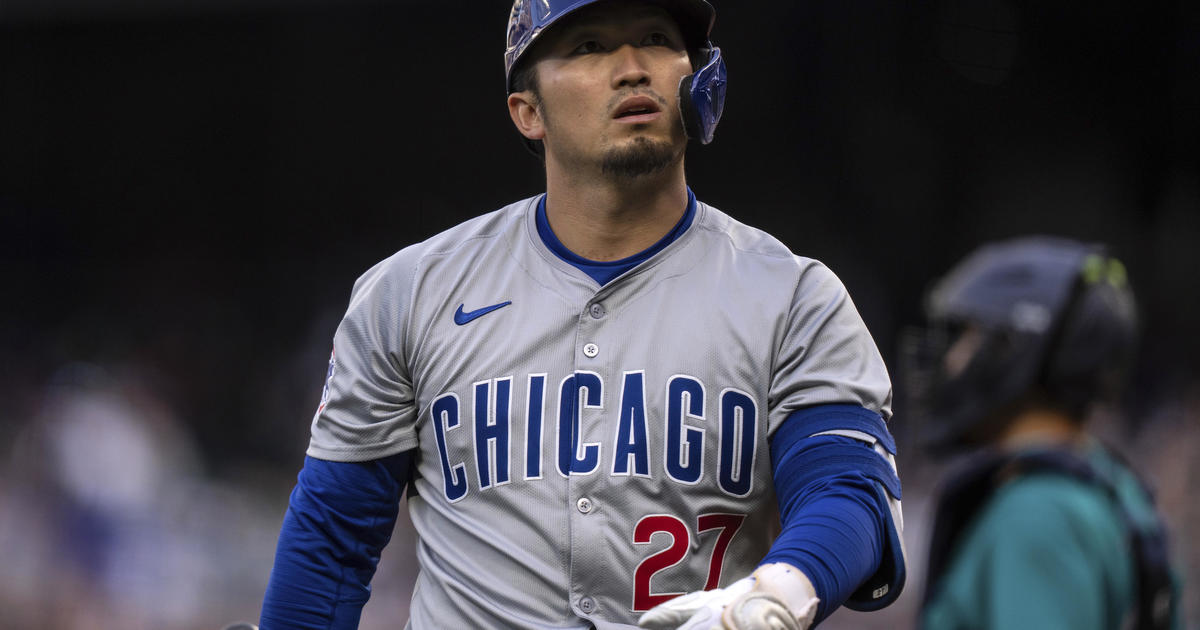Bernstein: The John Scott Circus Has A Point
By Dan Bernstein--
CBSChicago.com senior columnist
(CBS) Step right up, kids, and get a good close look at something rare and wild, right in front of you here at Bridgestone Arena in Nashville! Come on in, and see something special.
We don't know how long they'll be around, these glorious beasts, so marvel at this one's existence while you can. See that big, slow thing struggling to keep up with the others and serving no apparent hockey purpose? That is called … a goon! A real, live one, right there. Go ahead — take pictures, but no flash, because that might startle it and make it angry.
You see, goons like John Scott used to roam the ice all across the sport, punching guys on the other team. Believe it or not, that was their actual job — they weren't paid to skate fast, score goals and play defense, but to pick fights with other players to try to get "momentum" for their side. Some primitive cultures also worshiped their mythical protective powers, believing that their presence would keep their own stars safe beyond what the officials and league rules could do.
Every team had one, and some even had two or three! They were the stuff of legend, in fact, turning North American hockey into two sports presented as one. There was the contest to score more goals than the other team — that was the whole winning-the-game part — and then there was the toughness and manhood contest going on at the same time. That's where the wonderful goons came in, as coaches and players actually believed the bursts of punctuated violence affected the outcomes.
I know it sounds silly, but that was long ago.
Yet players became coaches and coaches became executives, and nothing came along to challenge such ancient beliefs, all but set in stone from Saskatoon to Broad Street on this side of the Atlantic Ocean.
In the 1980s, though, something began to happen, as the smarter and more sportsmanlike European version of the game made its way to these shores and started to show us some new realities about hockey. A change in the political climate allowed great Soviet players to ply their trade in the NHL, bringing with them a graceful, selfless style pioneered by a coach named Anatoli Tarasov. Another coach, Scotty Bowman, embraced this brand of the game for the Detroit Red Wings, signed several Soviet stars and won multiple championships. The NHL was starting to learn about possession, understanding the simple idea that the team with the puck more often was more likely to score more goals.
Then in 2005, a labor dispute resulted in a canceled season, and after that a hard salary cap. That meant every roster spot was more important than ever, and each player's real ability and versatility were scrutinized for value.
There were some goons, though, even as the game evolved. They still prowled the rink, stopping games to throw punches. They would fight, people would cheer, then the hockey would resume.
Then they started to die.
From 2010 through 2015 alone, seven "enforcers" passed away from a variety of causes, all seemingly related to what they did for a living, their brains deteriorating from too many blows. Some killed themselves, some spiraled into depression and drug abuse before succumbing, but all fit a disturbing pattern. Todd Ewen, Wade Belak, Derek Boogaard, Barry Potomski, Bob Probert and Rick Rypien were all dead. So was former defenseman Steve Montador, who fought 70 times in the NHL.
More was going on, too, that endangered the goons. And it all involved science and math and people getting smarter. An enlightenment, if you will. Pay attention, boys and girls.
First, players and their families were learning about the seriousness of repeated brain injury, notably something called chronic traumatic encephalopathy. There was a large class-action lawsuit filed accusing the league of minimizing and covering up the issue, and a general increase in awareness and concern forced the NHL to at least act as if they cared about their players. It made all the fighting harder and harder to justify, and even some important people like Steve Yzerman began calling for it to be banned completely.
Second, an analytical revolution at the same time was documenting some objective facts about hockey that had been long obscured by misguided traditional knowledge. Fanciful assumptions about what fighting meant were simply proved false as data were collected. Turns out, not only does instigating a fight not help a team's chances to score the next goal, it actually makes it less likely.
Anybody paying attention understood that the idea of gaining momentum from stopping the game to punch someone was silly and dangerously, needlessly so. The better metrics also refined and reinforced the puck-possession idea, helping teams realize that there was no longer a good excuse for keeping someone on the bench who was a bad stick-handler or skater, especially not after the hard salary cap was lowered in 2013.
The goons soon had fewer jobs in the NHL, with most of them relegated to zoo-like minor leagues in small towns where some folks still derive perverse pleasure from their antics. But they have mostly lost their place at the sport's top level as hockey has become better and smarter.
So there's a reason to appreciate and understand what you see out there, ladies and gentlemen, that anachronistic lummox trying in vain to skate three-on-three with some of the world's best and fastest. He's a dinosaur or a wooly mammoth, on display for all to see.
Enjoy John Scott, the All-Star Goon, for what he really is: hockey history brought to life.
Dan Bernstein is a co-host of 670 The Score's "Boers and Bernstein Show" in afternoon drive. You can follow him on Twitter @dan_bernstein and read more of his columns here.



